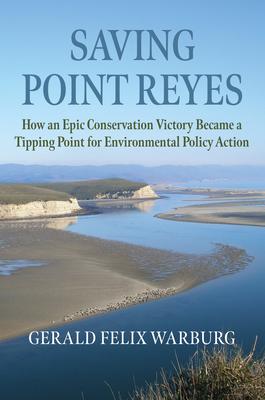The Point Reyes National Seashore (PRNS) is not only a stunning piece of land--the first large national park created from all private lands and the first large park adjacent a large metropolitan center--but the fight to save this fragile ecosystem in the 1960s was a key turning point in the environmental movement and helped transform the political landscape of California and the nation.
Saving Point Reyes is an environmental policy history that draws on archival materials, oral histories, and new interviews with veteran federal policymakers to understand how legislative bargaining and grassroots politics succeeded in achieving this victory for environmental protection. Gerald Warburgoffers the first political history focused on the battles to preserve the unique series of fragile ecosystems that surround San Francisco and the definitive study of exactly how Point Reyes was saved.
Most accounts of this story only focus on the 1962 bill that created the PRNS on 53,000 acres of private lands just north of San Francisco. But that was just the first act in the saga. The passing of the bill only established the park in theory, and the government only controlled 123 acres at Point Reyes. In the months following the signing ceremony, all three of the House, Senate, and White House champions of the Point Reyes legislation died, leaving the PRNS without the leadership necessary to secure the funding to purchase the rest of the land. What followed was an epic public policy battle to save Point Reyes. Local grassroots lobbying organizations arose to advance the cause of PRNS and other environmental campaigns, and their victory in 1970 laid the foundation for future environmental activism. With this new funding, the PRNS expanded to over 71,000 acres, which then grew to 87,000 acres in 1972 with the creation of the Golden Gate National Recreation Area.
The legislative bargaining and grassroots politics in the fight to preserve Point Reyes helped create a tipping point, profoundly altering the national environmental movement. Warburg's deeply researched case study of NGO activism and congressional action is developed through a compelling narrative that offers specific lessons learned and hope for future environmental challenges, from climate policy to public lands preservation.
